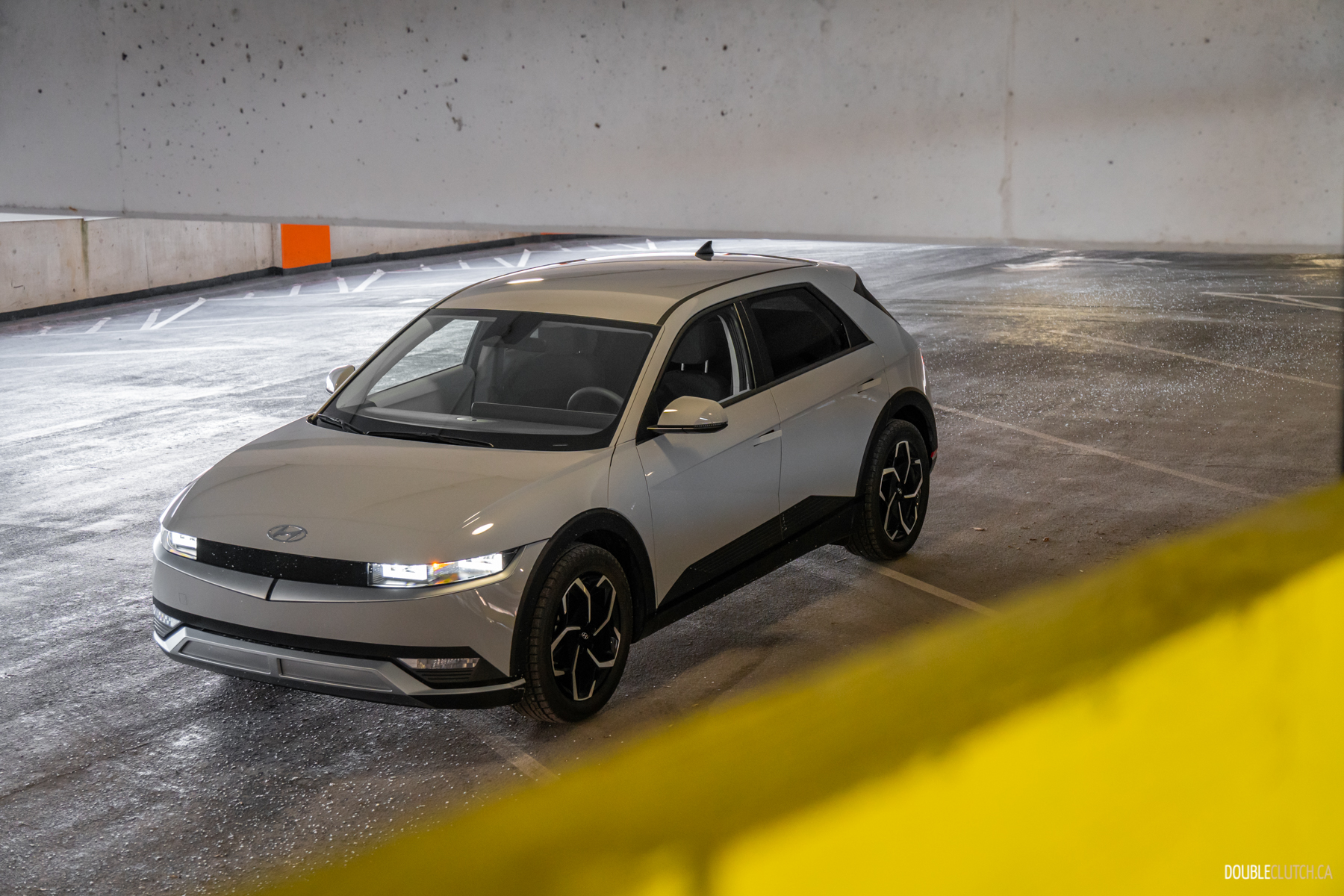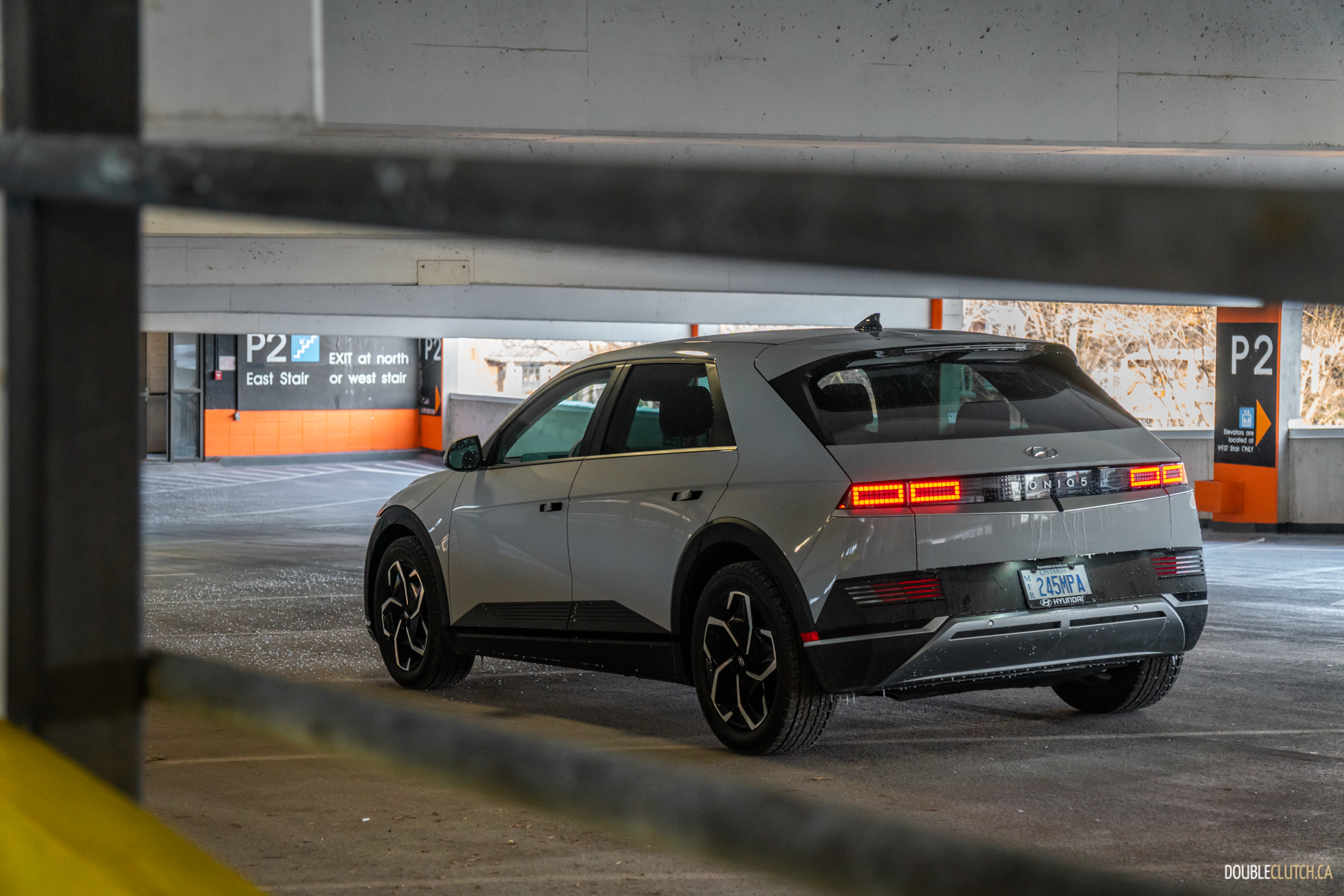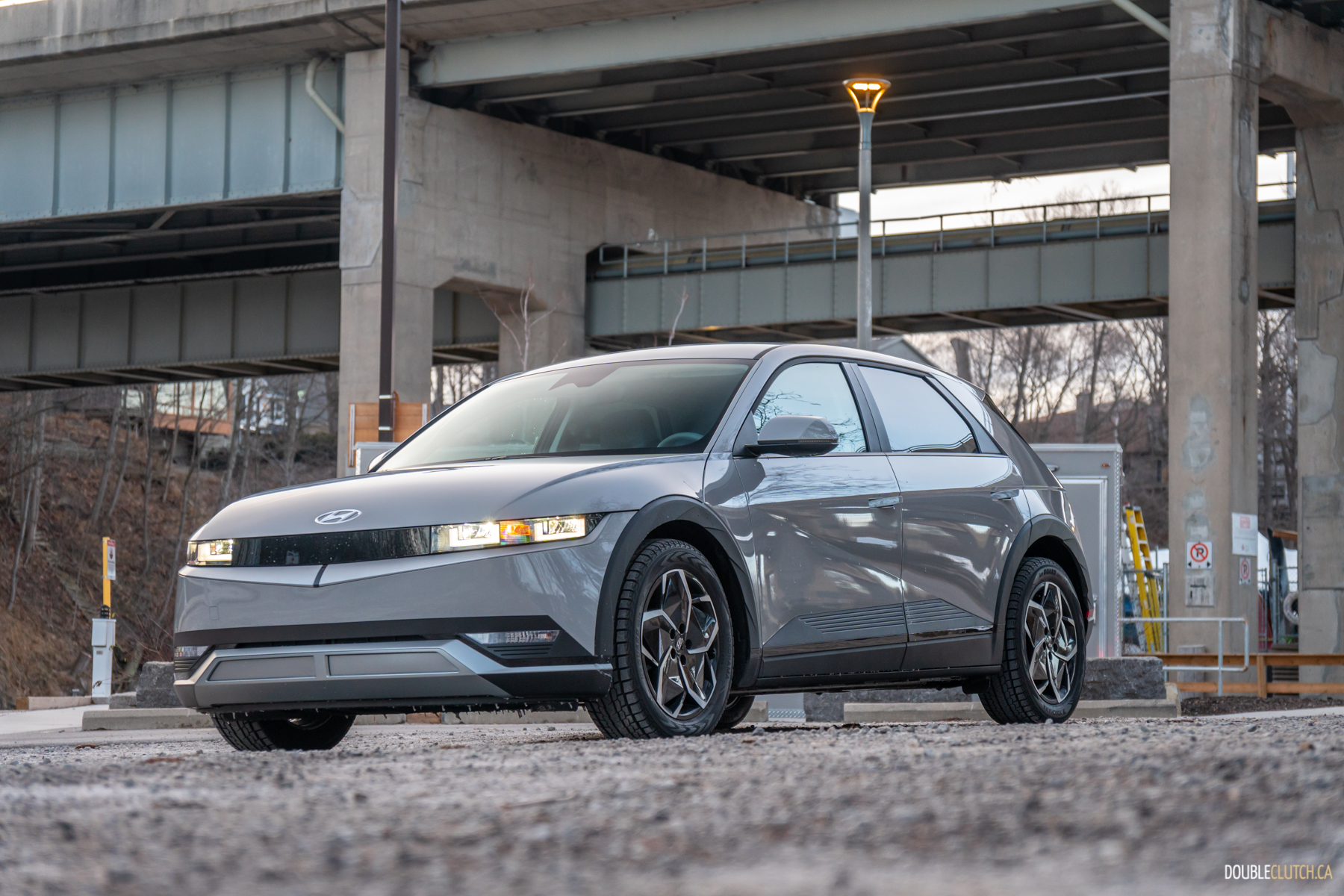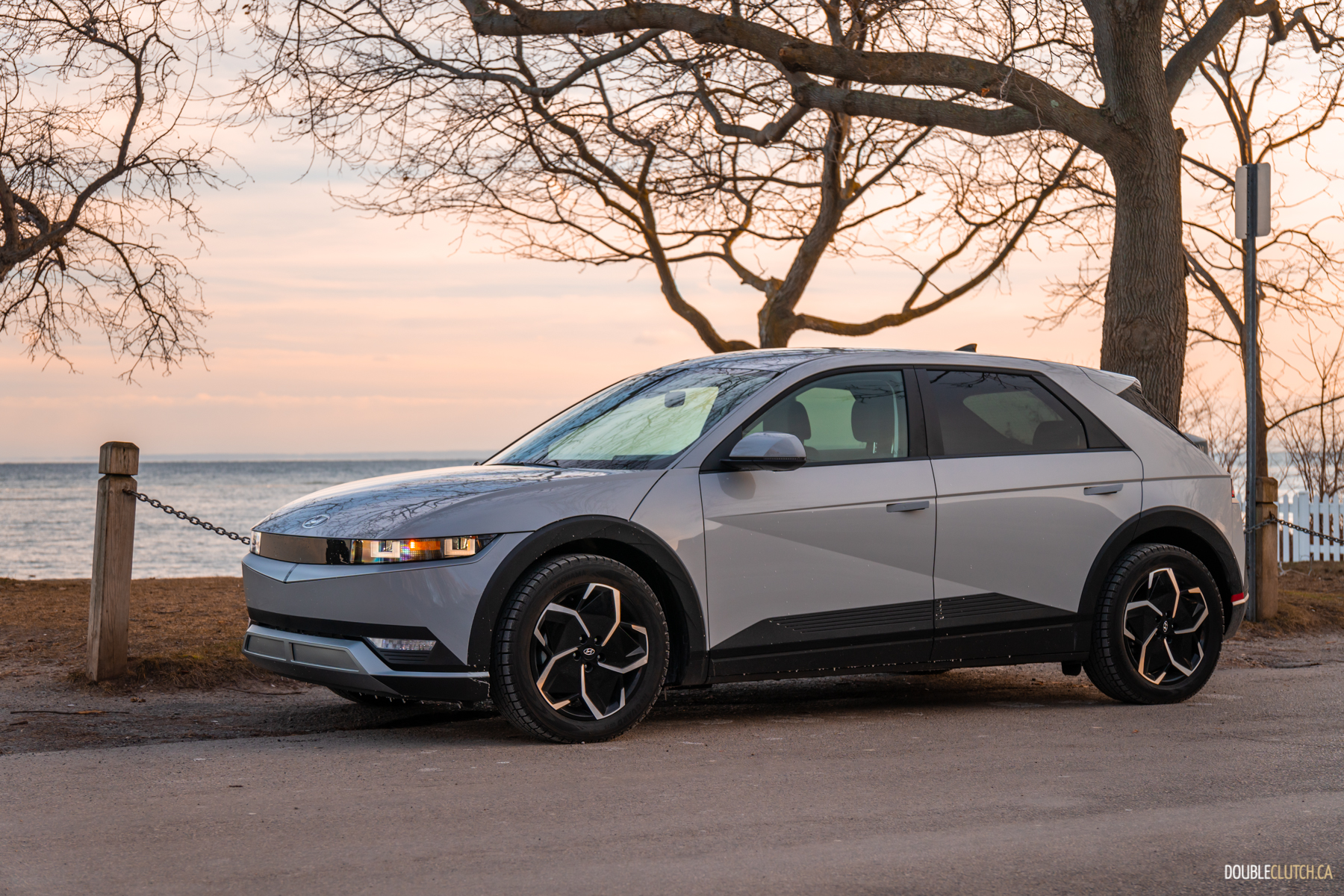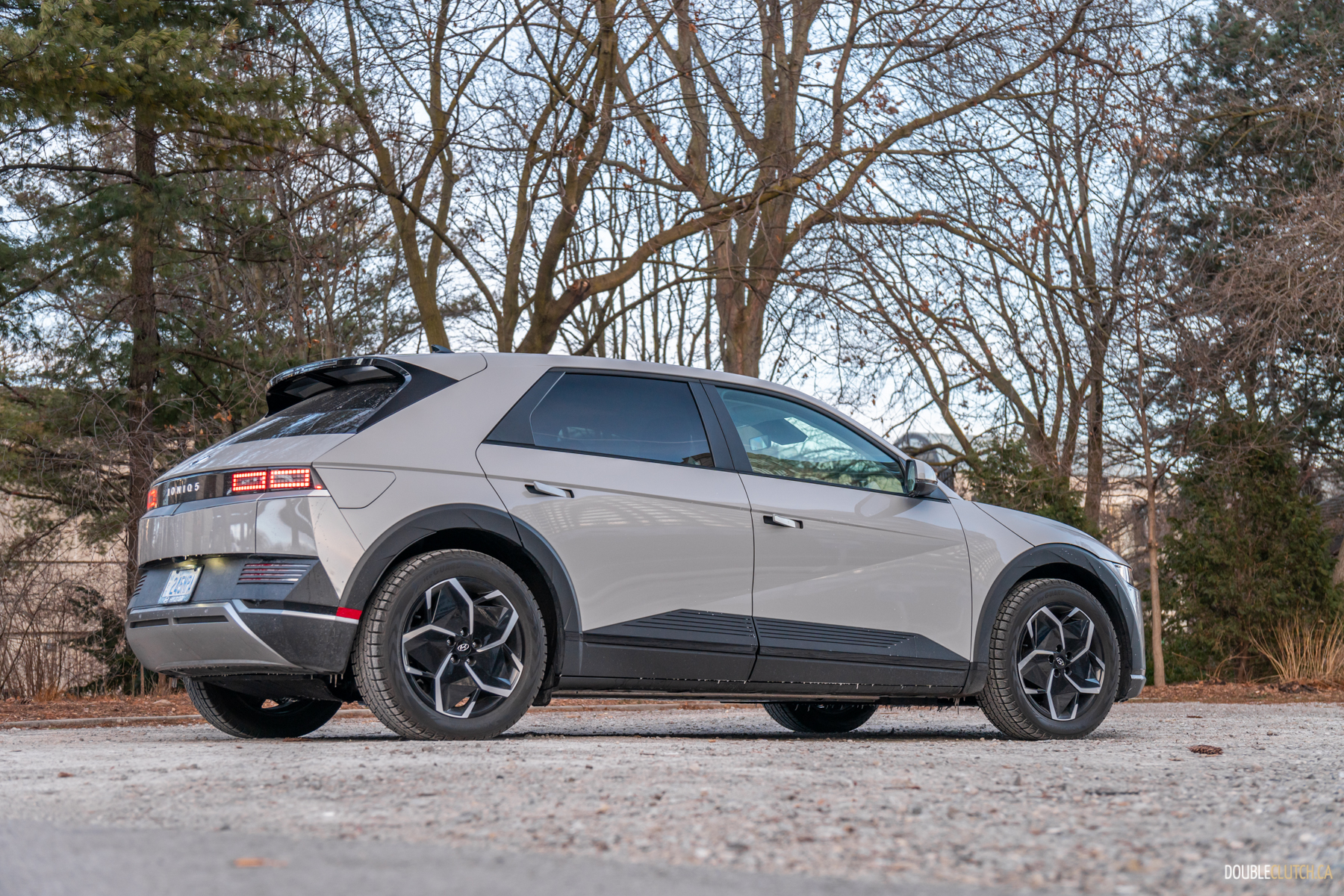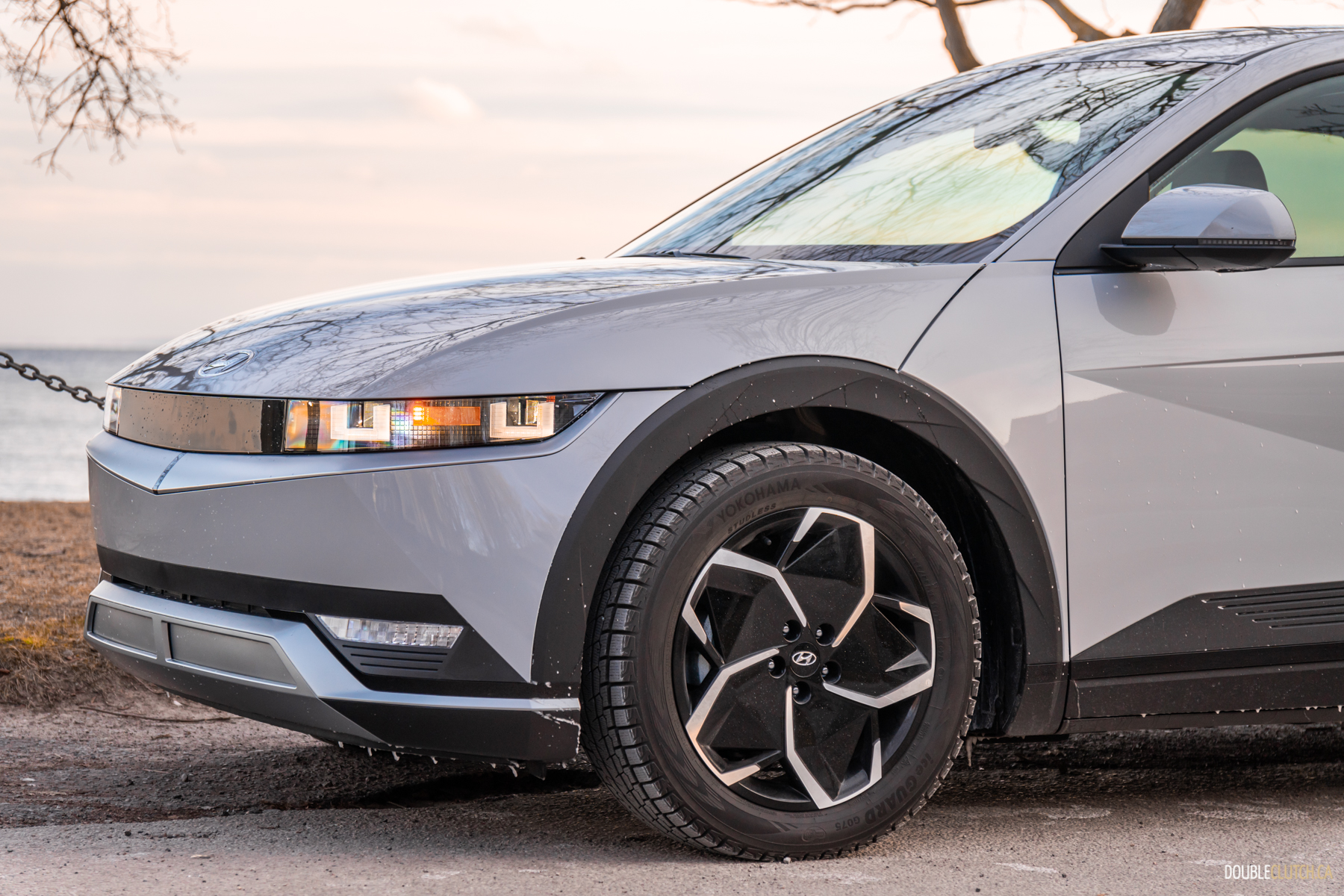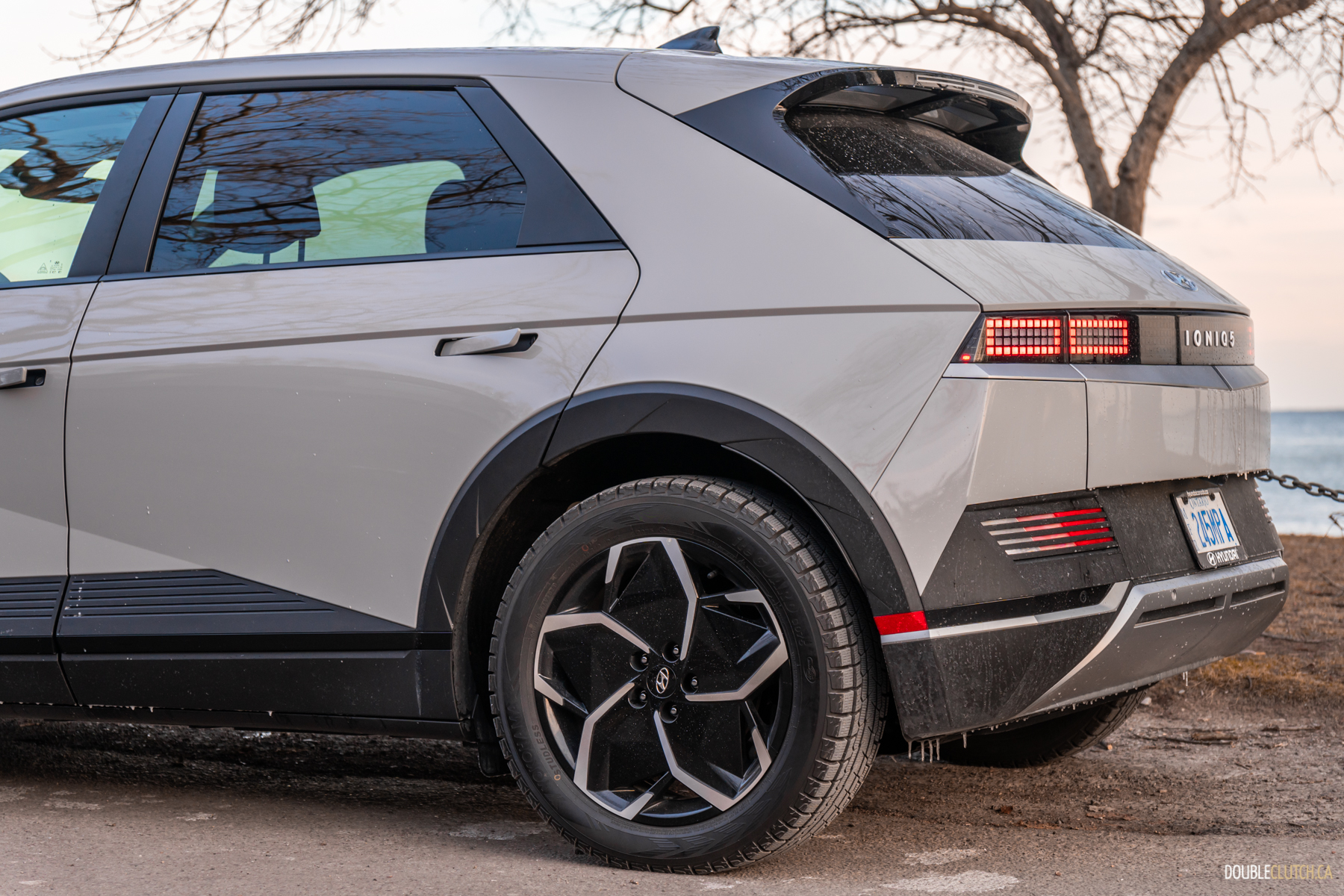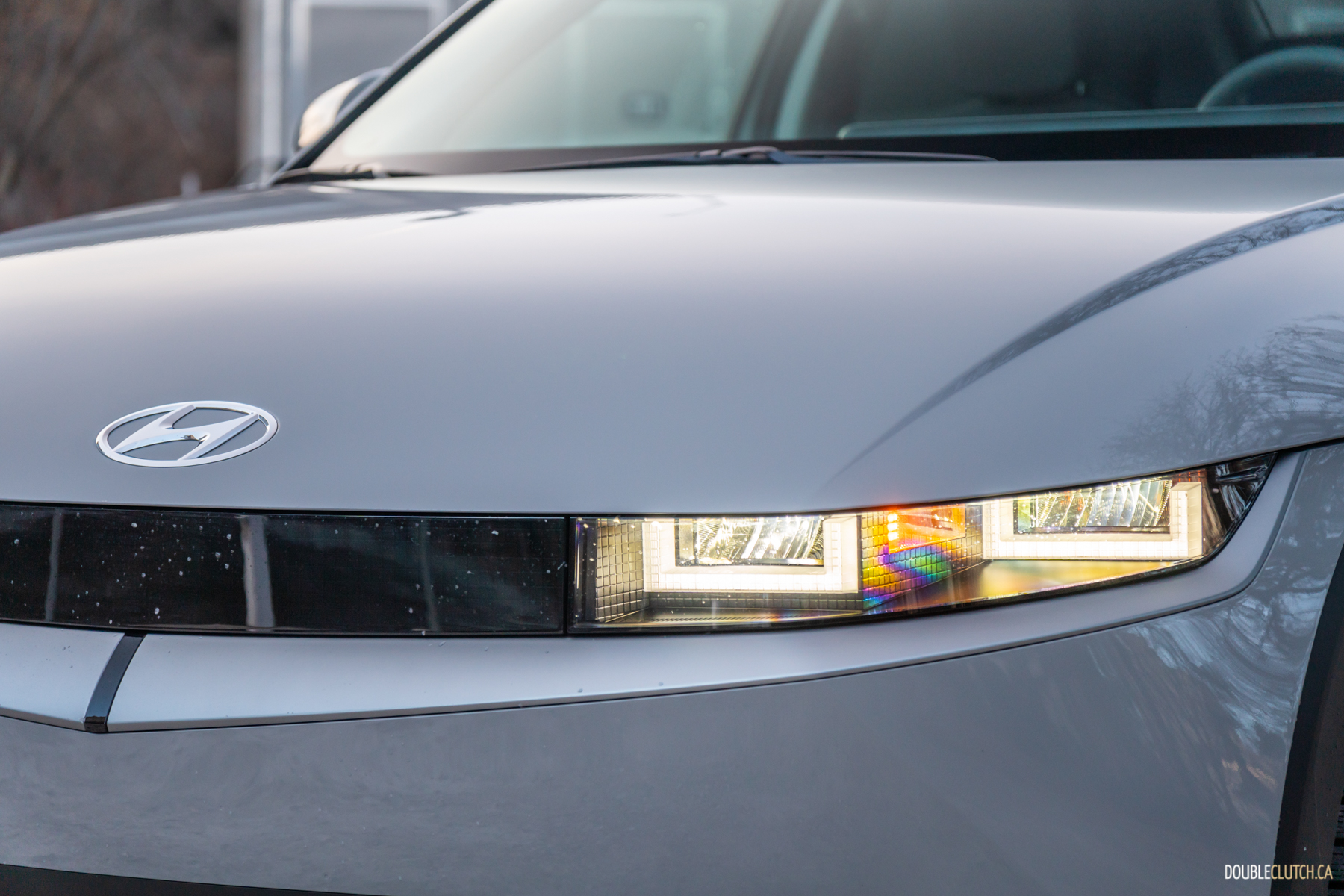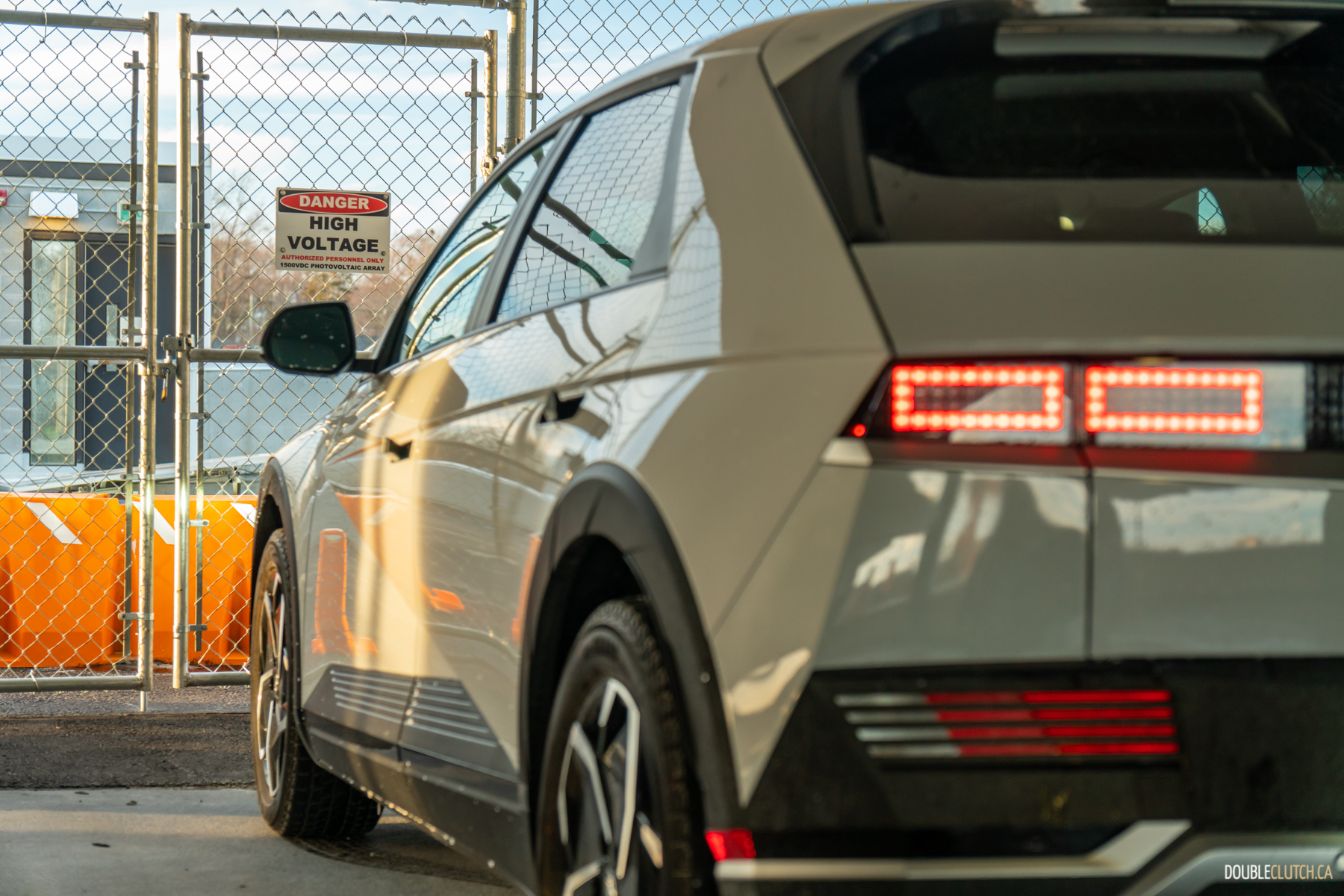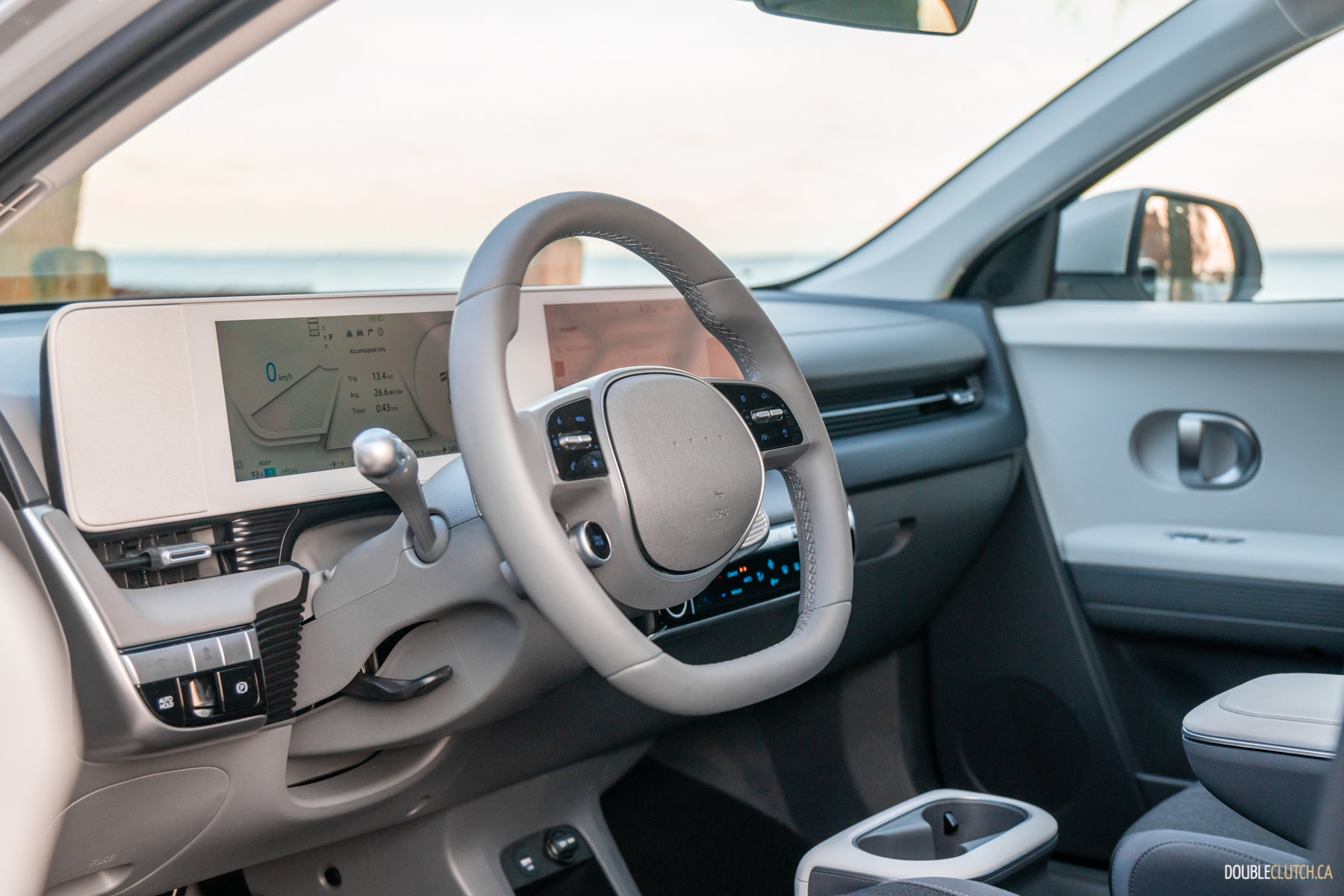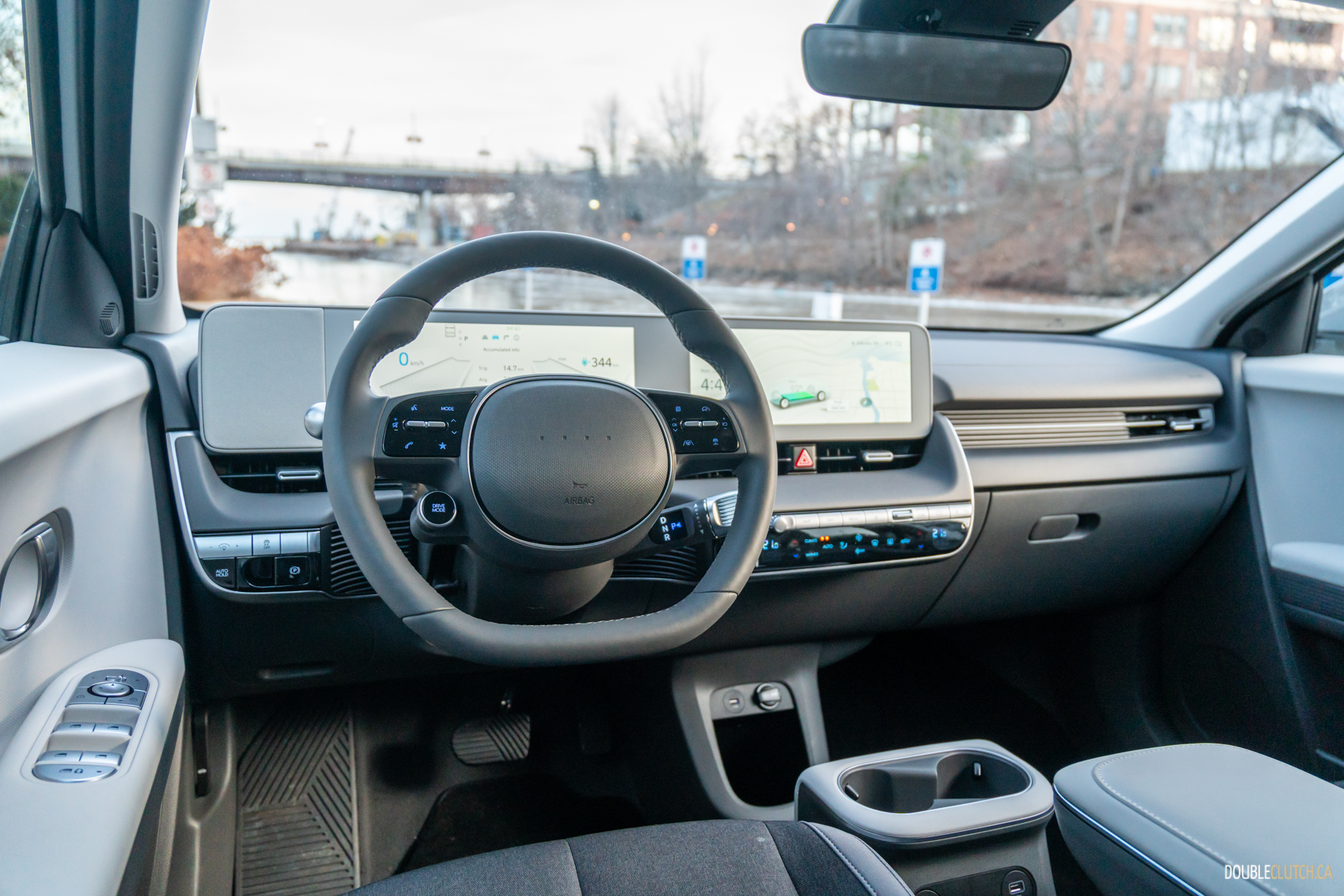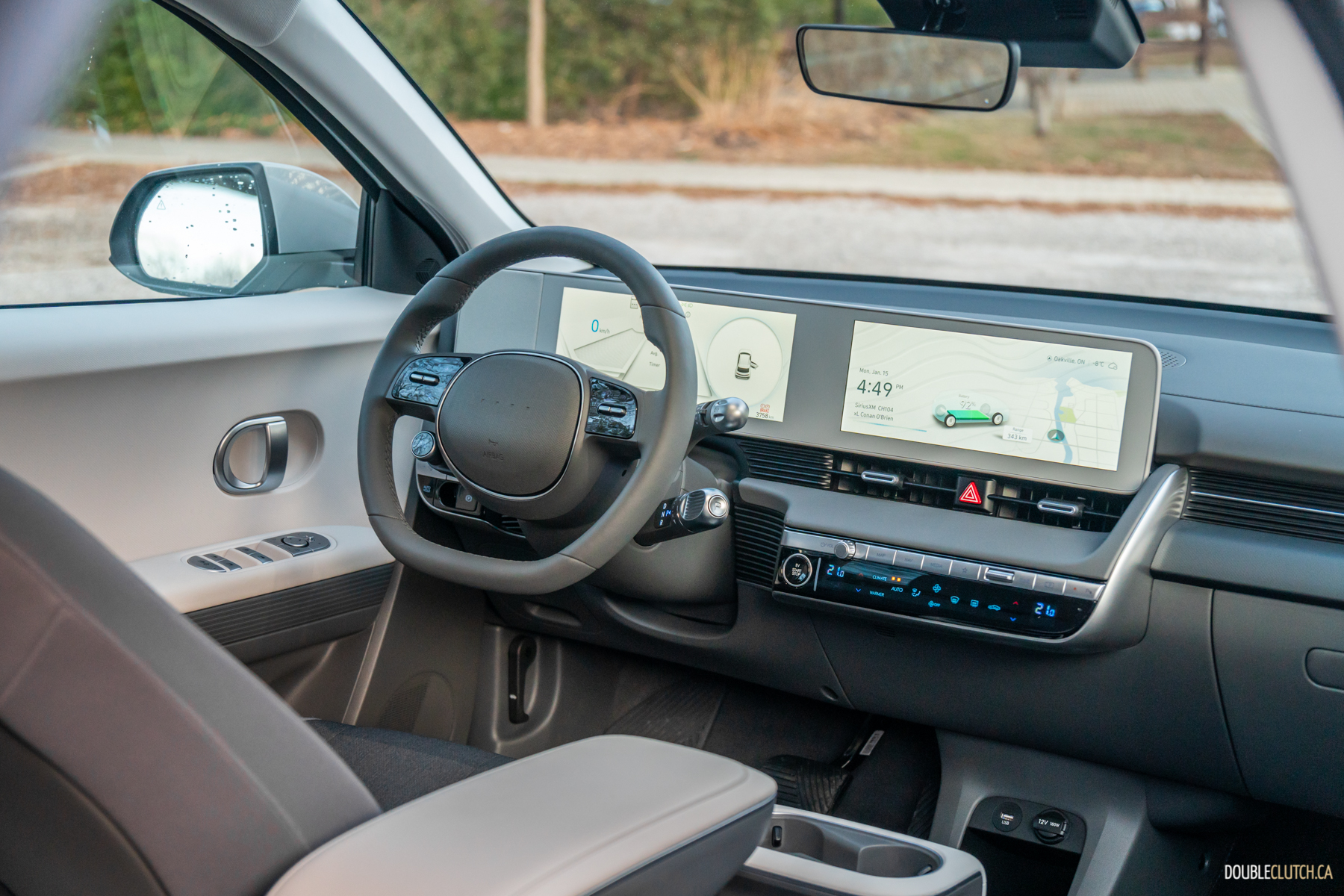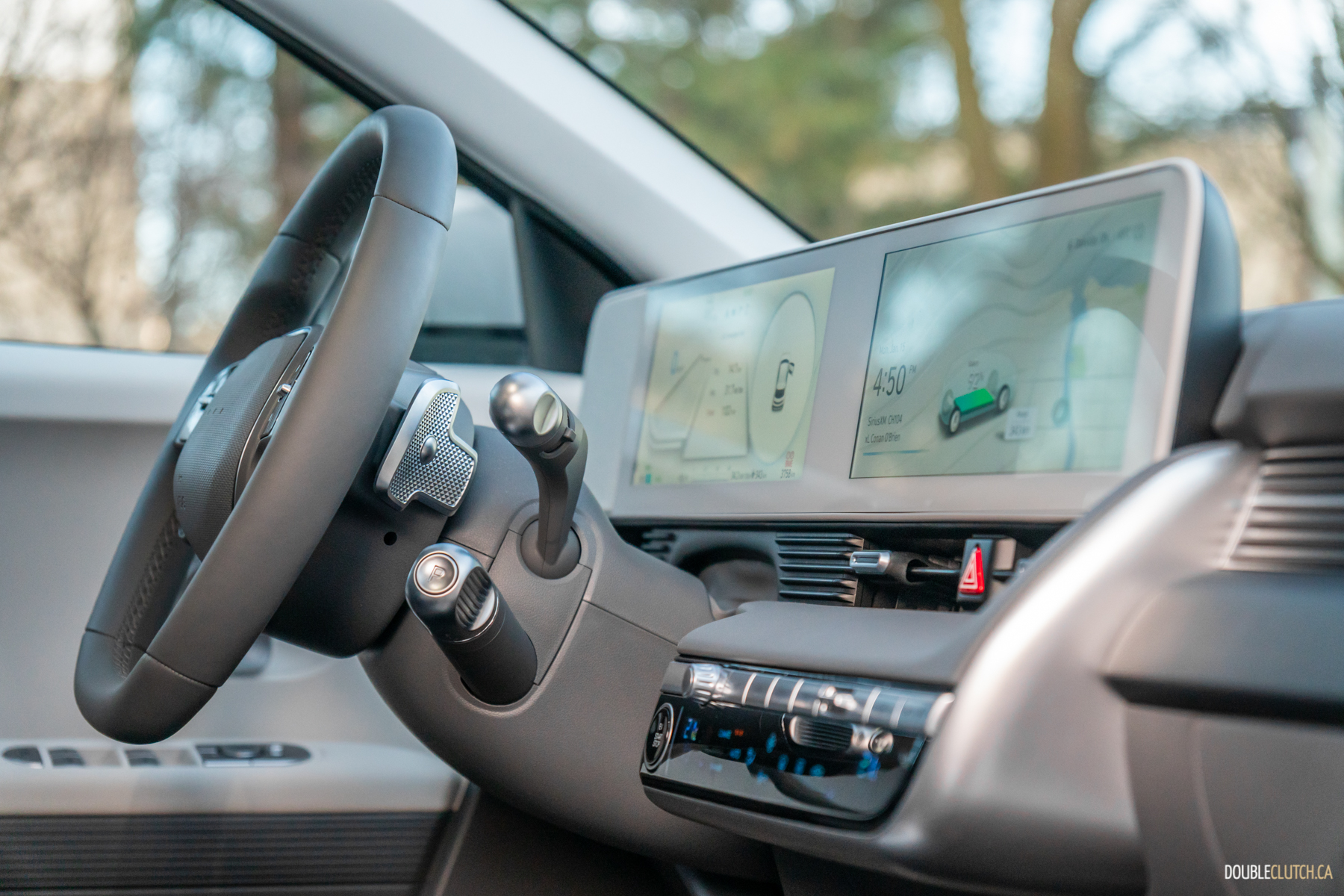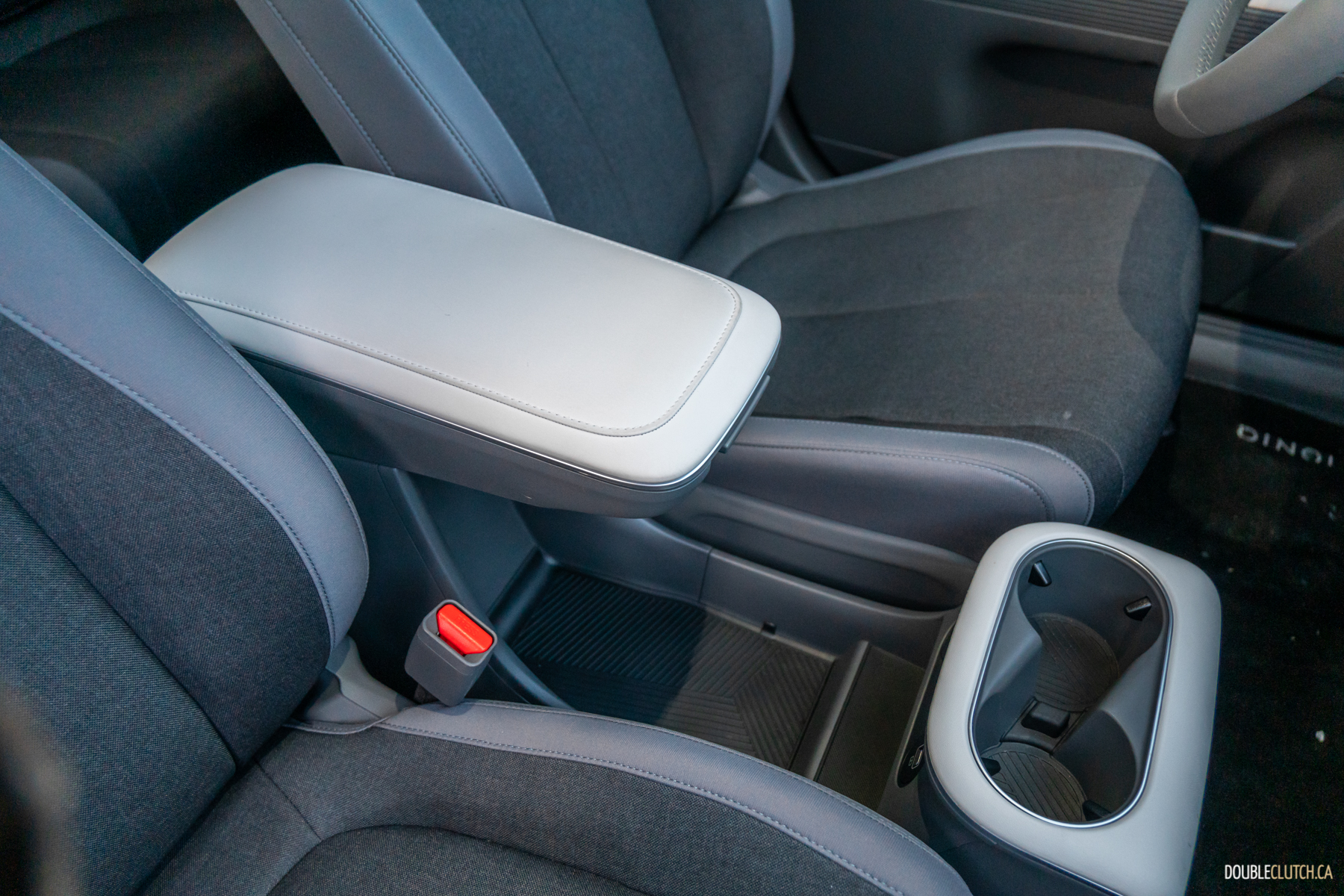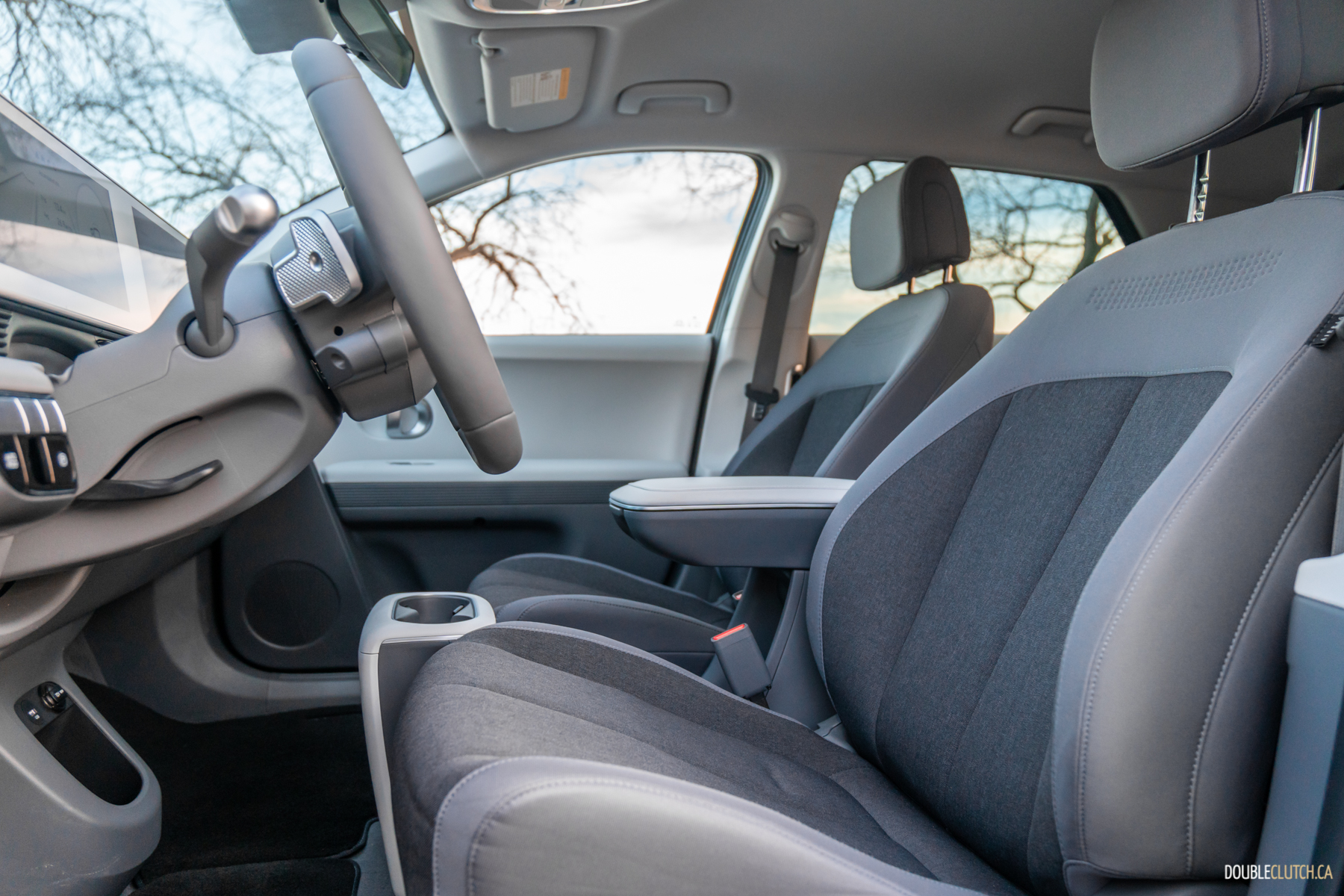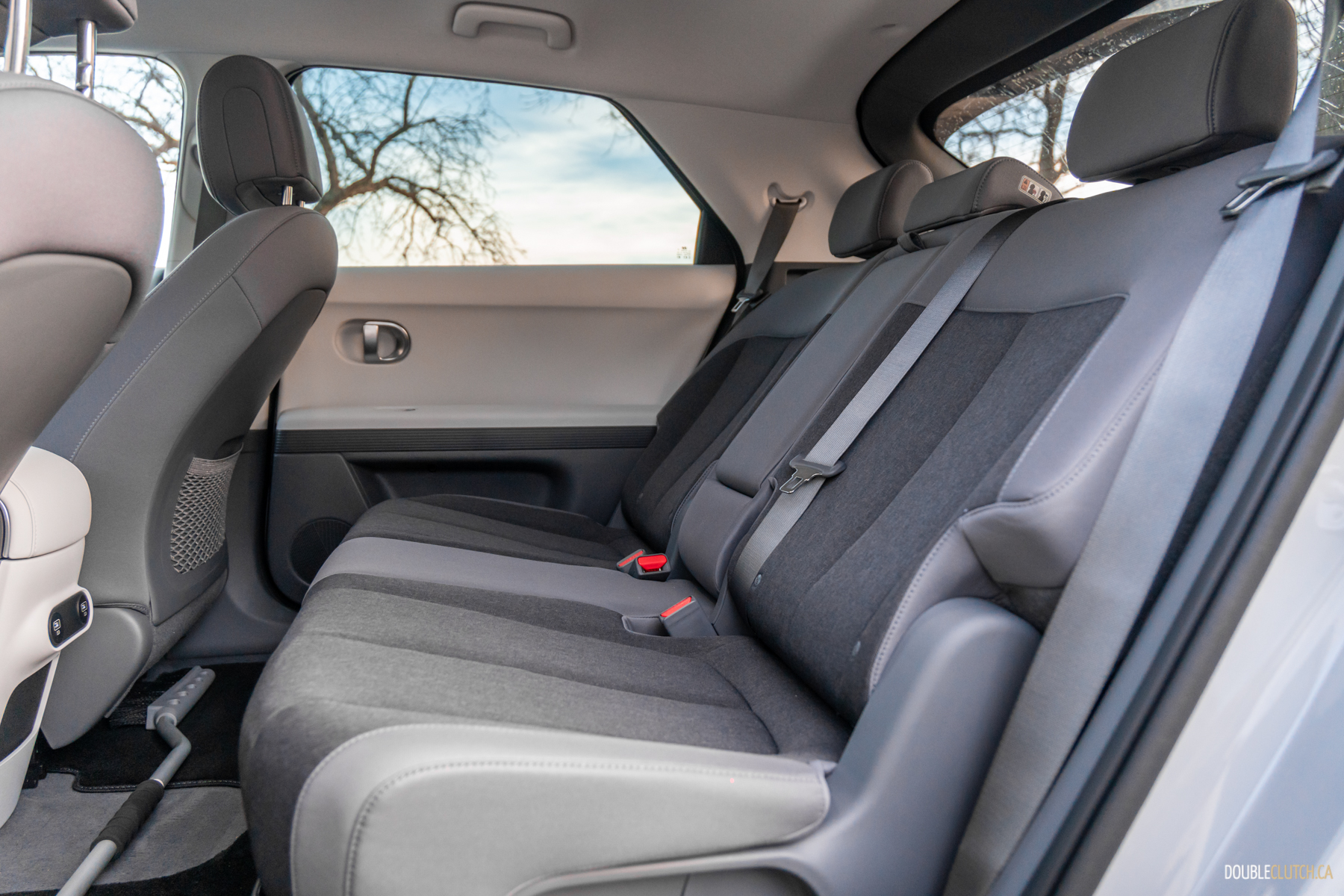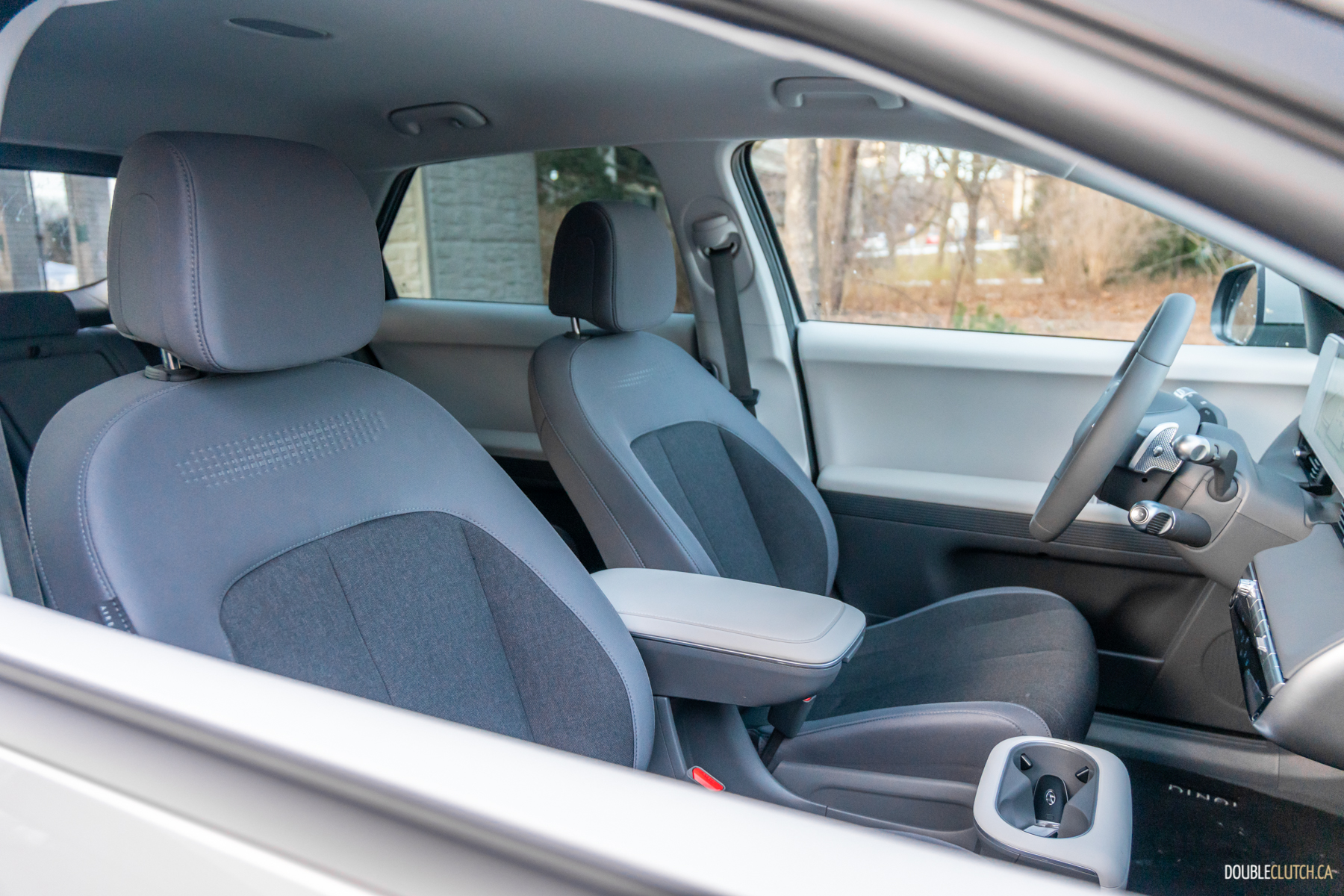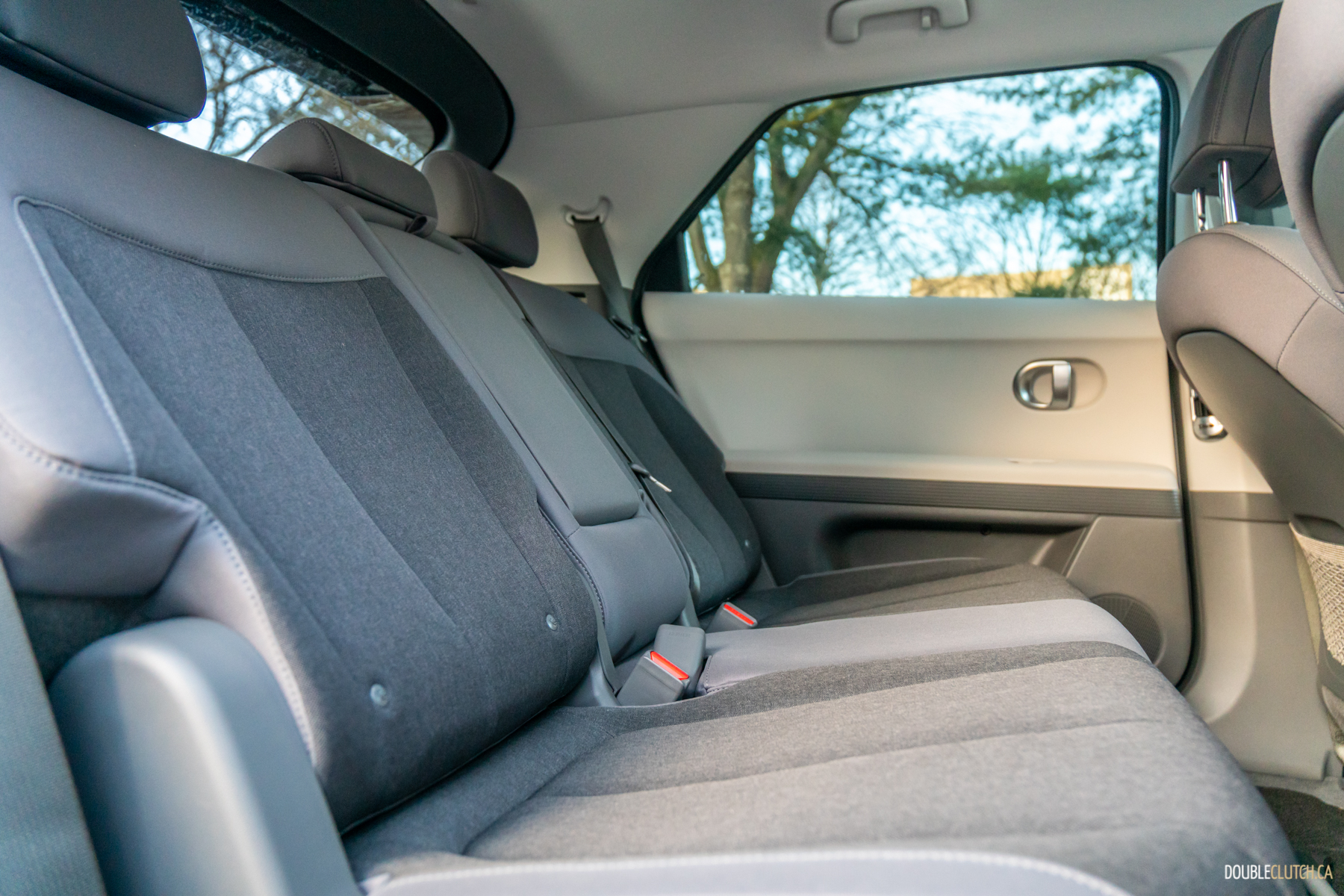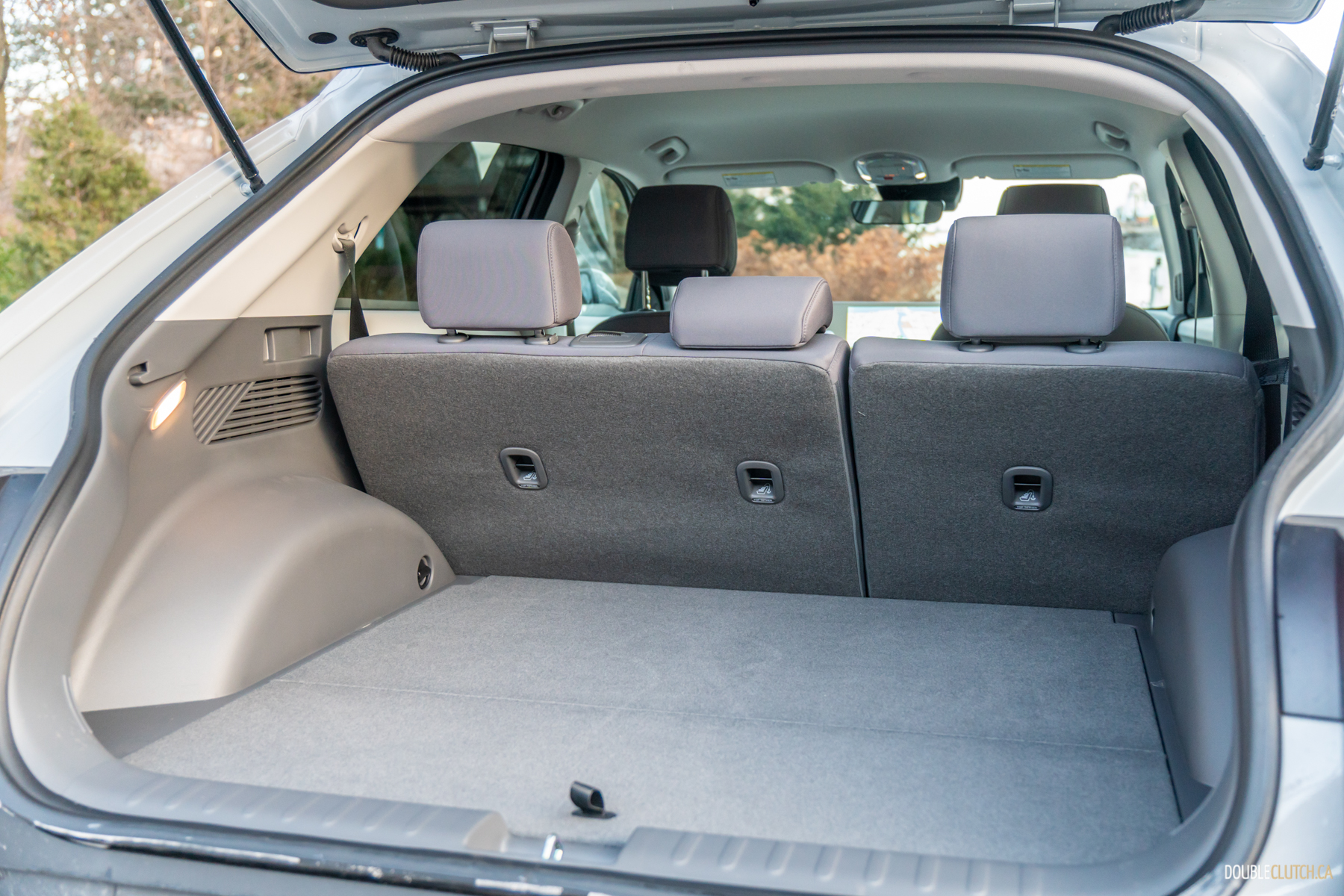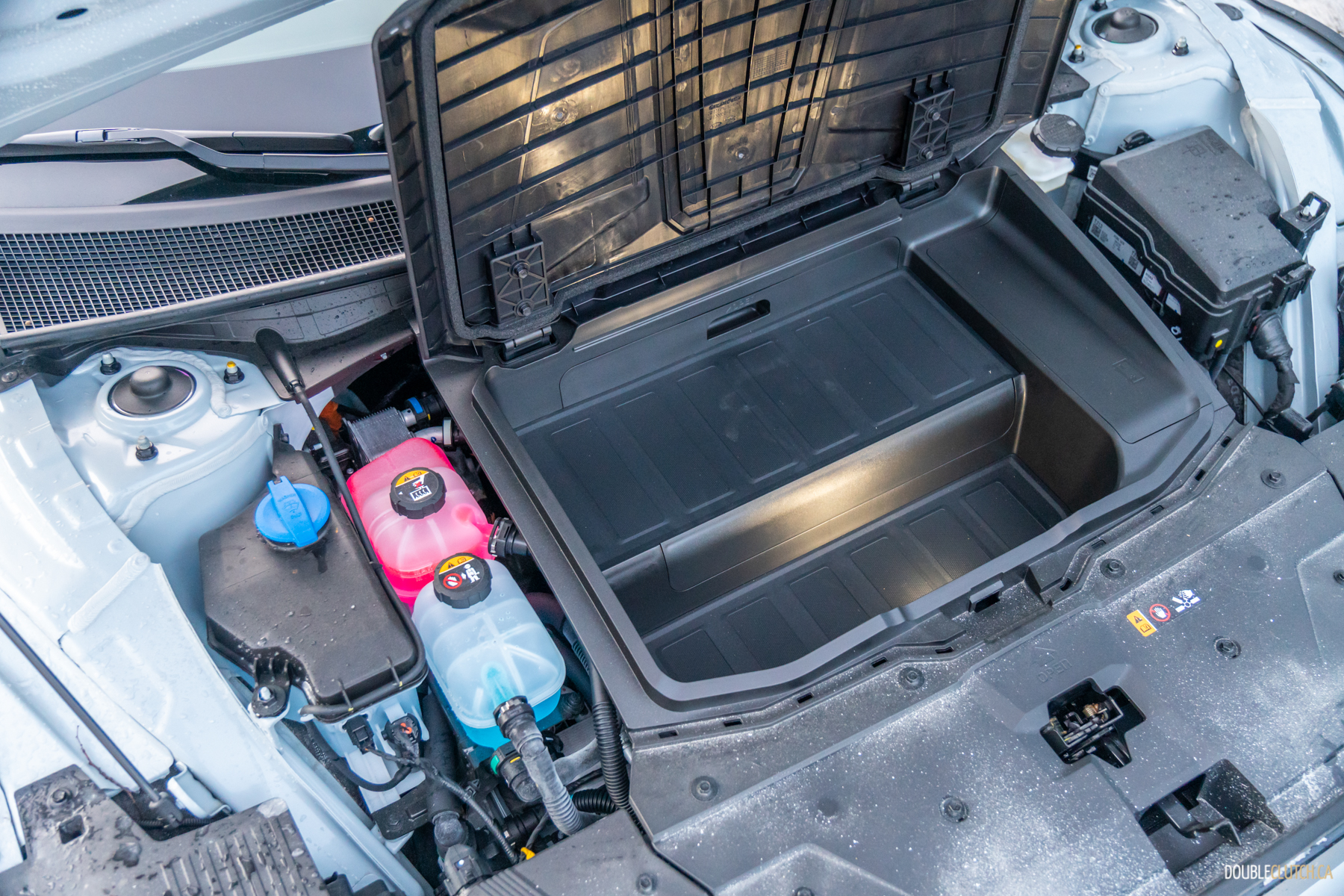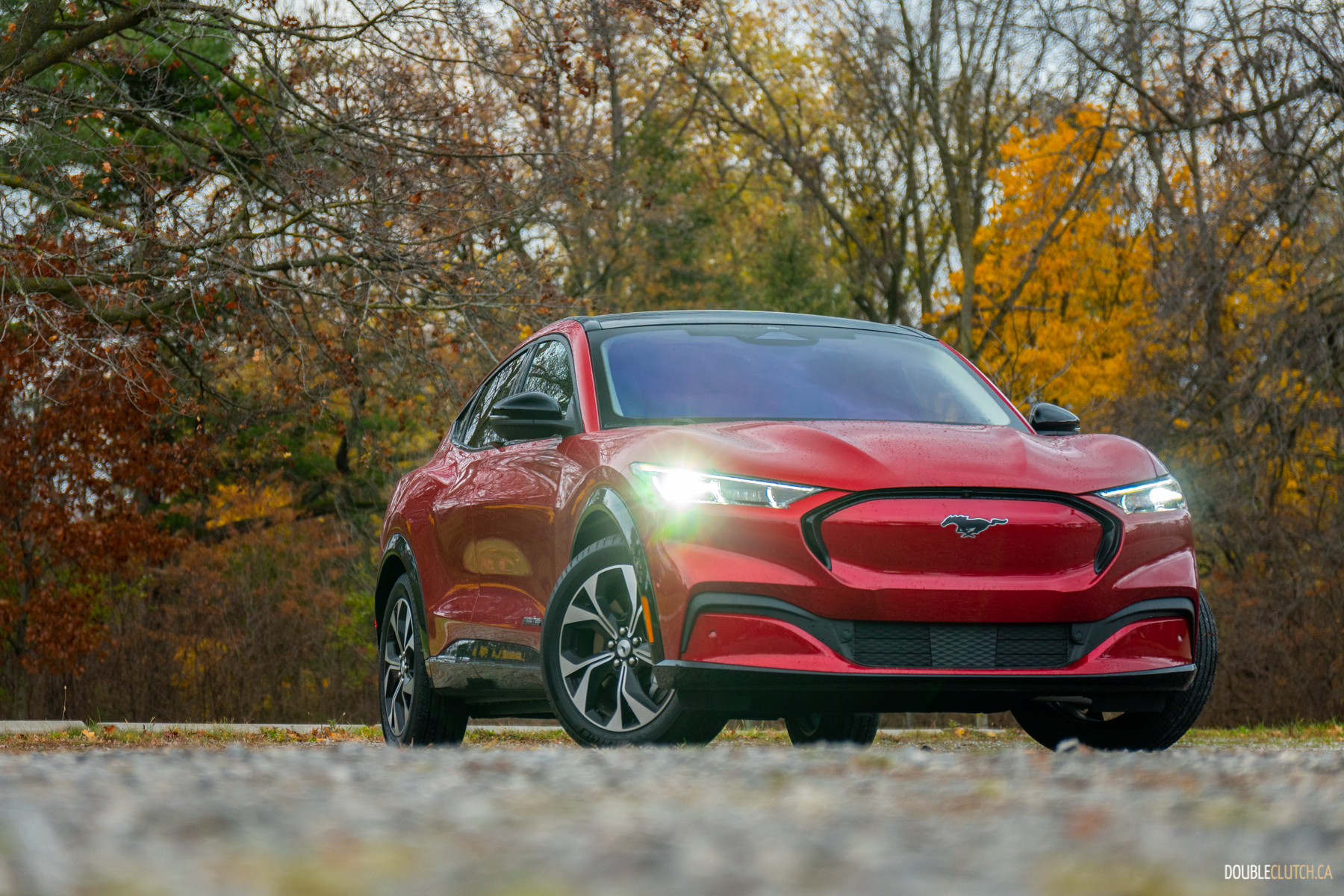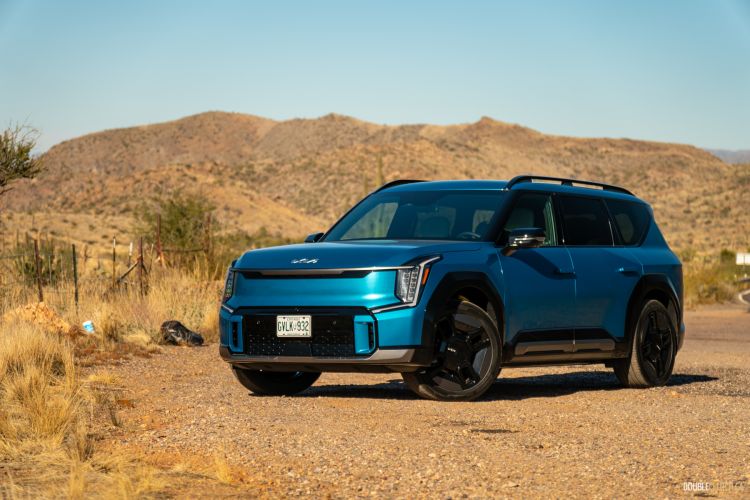I didn’t want this assignment. Not because I have anything specific against this car, it’s more a case of this: what else am I supposed to say about the most awarded, highly praised car in the world? A straight-up review will be the same glowing fluff piece that’s already been written a hundred times. I could try taking a contrarian tack, but then I’d be discrediting myself, because that contrarian idea I had fell apart almost immediately when I drove it home and determined that the 2024 Hyundai Ioniq 5 RWD is in fact very much deserving of all its accolades, even in its most basic form.
I was thinking maybe I could work the angle of electric vehicles, even the very best ones like this, falling flat on their face when yanked out of the American southwest where they’re all launched and introduced to the harsh reality that is a Canadian winter. It was more than a little snowy and bitterly cold for the week I had the Ioniq 5, and while our wintry conditions did have a substantial detriment on its effective range, it was still more than enough to be usable without worry.
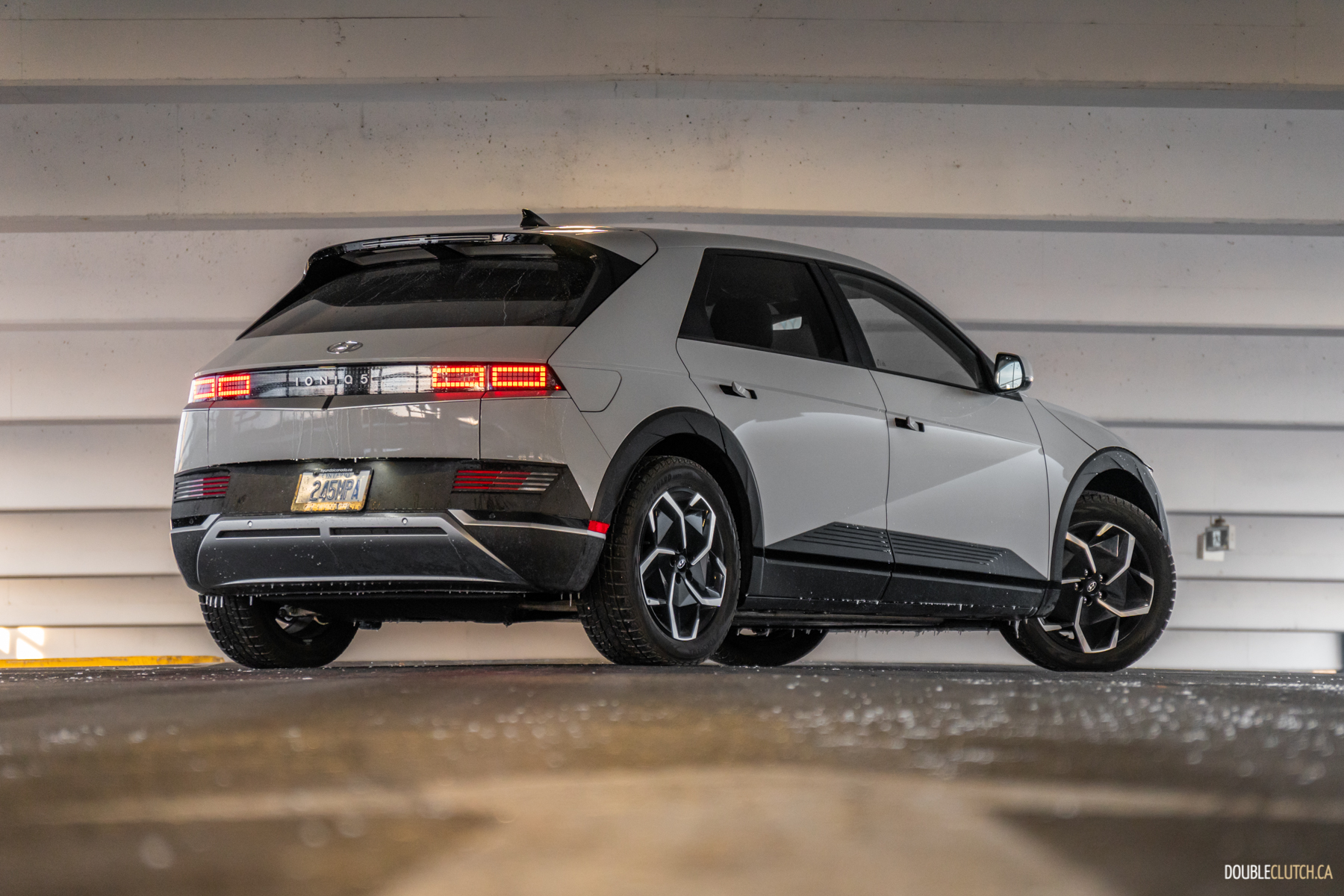
I charged it at the office on day one, and it showed an estimated 377 kilometers of range, down almost a quarter from the 488 kilometres Hyundai quotes for this most basic, single motor tester. I also insisted it on using it like a normal car and not hiding from the negative double-digit temperatures, so I took it out of Eco mode for much better throttle response, turned the heat on for both sides of the cabin, and fired up the steering wheel and seat heaters — after all of which my range dropped to 352. That’s not bad at all for what’s pretty much a worst-case scenario for one of these things.
I spent a whole day bombing around running errands, blasting the heated amenities, remote-warming at every opportunity, and generally pissing energy away for no reason other than my own self-indulgence — and the Ioniq 5 still had more than half the battery left. More than that though, is that the Ioniq 5 accurately/pessimistically calibrated itself account for self-indulgent wieners like me, and as such, the indicated range descended linearly with mileage, rather than falling off a cliff at the bottom of the battery like we’ve seen in some other EVs.

It has electronically actuated door handles like every other EV, but they’re a real tangible mechanism behind the showiness, and weren’t hindered by ice buildup. The cabin gets warm super quick and without much penalty thanks to the standard-for-Canada heat pump, and there’s no angry engine to pry at my sense of mechanical sympathy for being fired up when being stone dead frozen. There’s no transmission to shift awkwardly until the fluid warms up either. It just … works. Nicely.
The base Ioniq 5 is unencumbered by snow, even without all-wheel-drive. Electric traction control is on an entirely different level from any gas car, as it’s able to meter out power so much more precisely and immediately. Its one-pedal driving mode isn’t the most natural in the industry, and it’s thrown off kilter by slippery surfaces, but this is easily abated by simply not using it. Less easily abated is the absence of a rear windscreen wiper, the only glaring complaint I have about this otherwise impeccably executed transportation product.

That’s my biggest personal complaint about the Ioniq 5. It’s not a car; it’s a mobility solution, a commuter appliance. It’s probably being exacerbated by the ultra-sterile grey-on-grey-on-white color scheme (or lack thereof), but I can’t get away from the sense that this is missing something. This car, and its cabin space, remind me so much of the kitchens I installed when the pandemic got me out of bartending and into something else. They were, nearly without fail, all light grey cabinets, white countertops and backsplashes, dark grey floors, and stainless-steel appliances. Said metallic-accented appliances were even all controlled by the same gloss black capacitive interface with the same icy-blue iconography. I remember what these kitchens looked like before I ripped them out, but I don’t remember them after the job was done. They were slick, classy, modern, practical, and totally void of distinction, or anything resembling soul.
This is a question I’ve struggled with: how do you impart mechanical soul into an EV when the primary mechanism responsible for generating that soul is eliminated? What even is a soul in a machine, in a car? I’ve long thought that this misguided sense of assigning an intangible element of soul into a car is just an extension of the natural human instinct to anthropomorphize things; to project human qualities onto that which isn’t human. It’s this trait that makes you sympathetic towards cute plush toys, or a stapler that someone decided to name Steven.
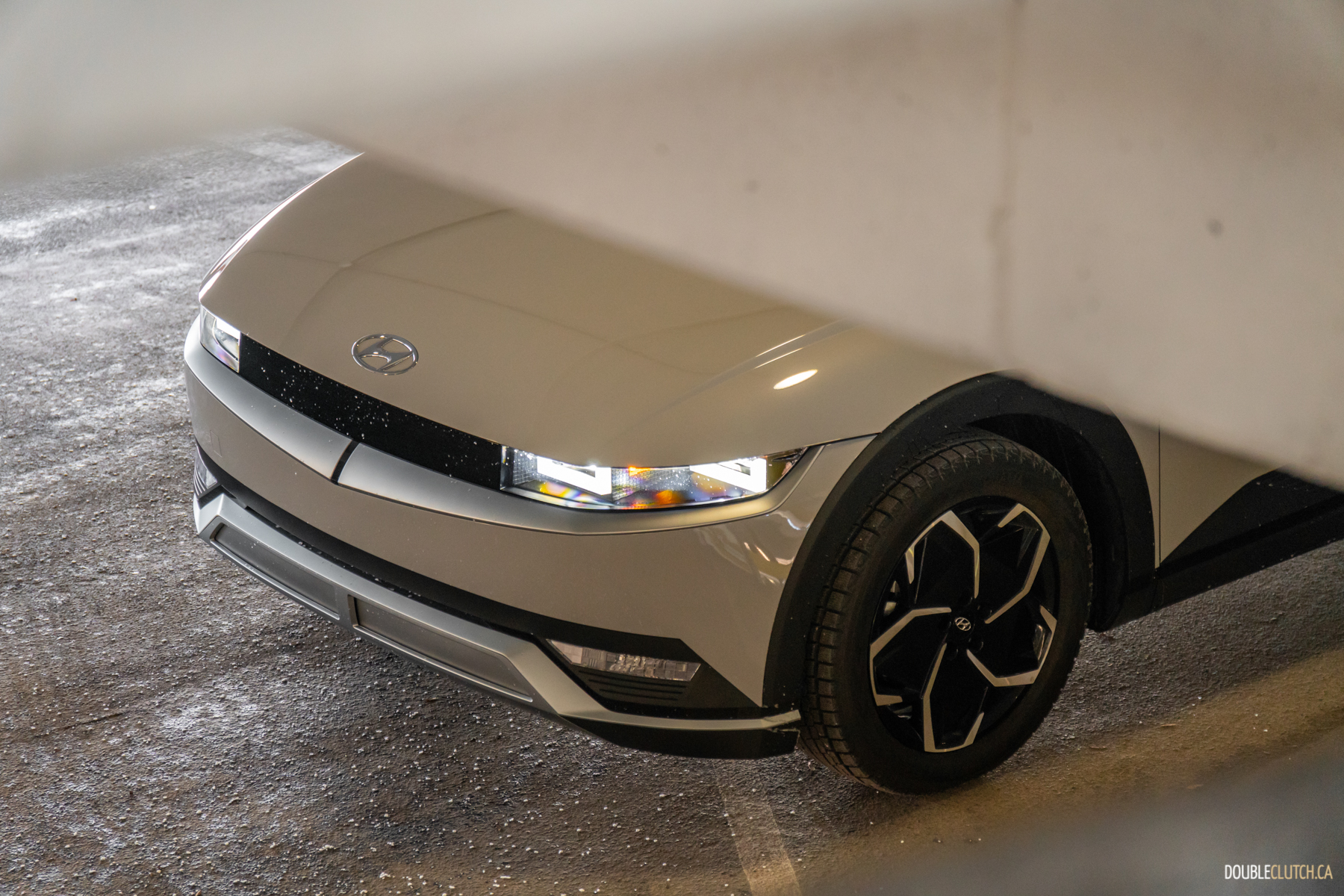
I think a big part of this tendency towards humanizing cars — and this may well be a reflection of my own experience, with my own revolving door of clapped-yet-interesting hoopties — comes from explaining away faults and foibles, and making them endearing. Humans are faulty. We all have our foibles, and it becomes a lot easier to forgive a car for its foibles when you start thinking of it as an entity like you, and in doing so, it becomes human, like you.
This is my biggest problem with the Ioniq 5, personally. It is, for all intents and purposes, without flaw. Its home-run style nails the chic retro-futurism that’s so in right now, it’s incredibly practical with tons of storage, passenger room and cargo space. It drives well, it has a range that’s usable even in the worst of conditions, and it features the fastest charging in the business when it comes time for it. It’s comfortable, well thought-out, and a nice place to spend time — just like a modern kitchen.
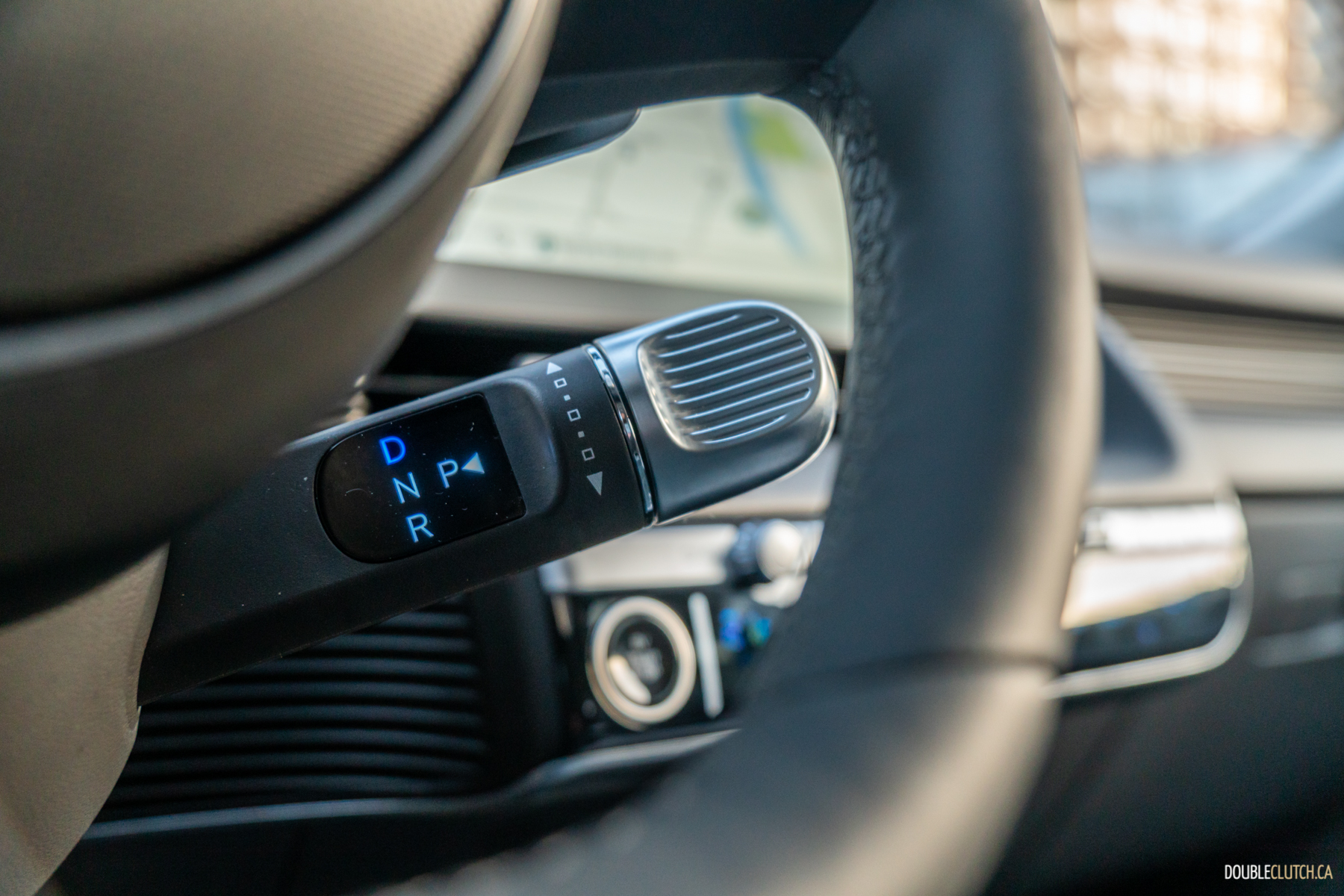
It’s almost like Hyundai deliberately went after the minimalist modern kitchen aesthetic, taking the joke of “why can’t car interiors be like houses” from one of my favorite old Top Gear episodes and made it a massively successful reality. I want to reject the Ioniq 5 because it so specifically targets the crowd looking for a transportation appliance that looks, feels, and functions like their fridge, clogging the roads with a bunch of neutral-toned box-blobs that are impossible to differentiate from each other, all having to adhere to the same aerodynamic principles in the quest for more range, and all sounding like nothing at all.
I’m of the opinion that cars can and should be more than that, and the advent of the EV has me worried that will go away. Perhaps the greatest concern that comes from this is the knowledge that I’m probably wrong for holding the opinion that I do. I’m probably just being a curmudgeon; I probably just want to resist the brilliance of this little car because it represents a future that I recognize is vastly superior in a lot of ways, even if it leaves a part of me out in the cold. In my head, the acceptance of an electrified future used to be easy to postpone because the cars were pretty easy to write-off neat novelties that don’t actually work.
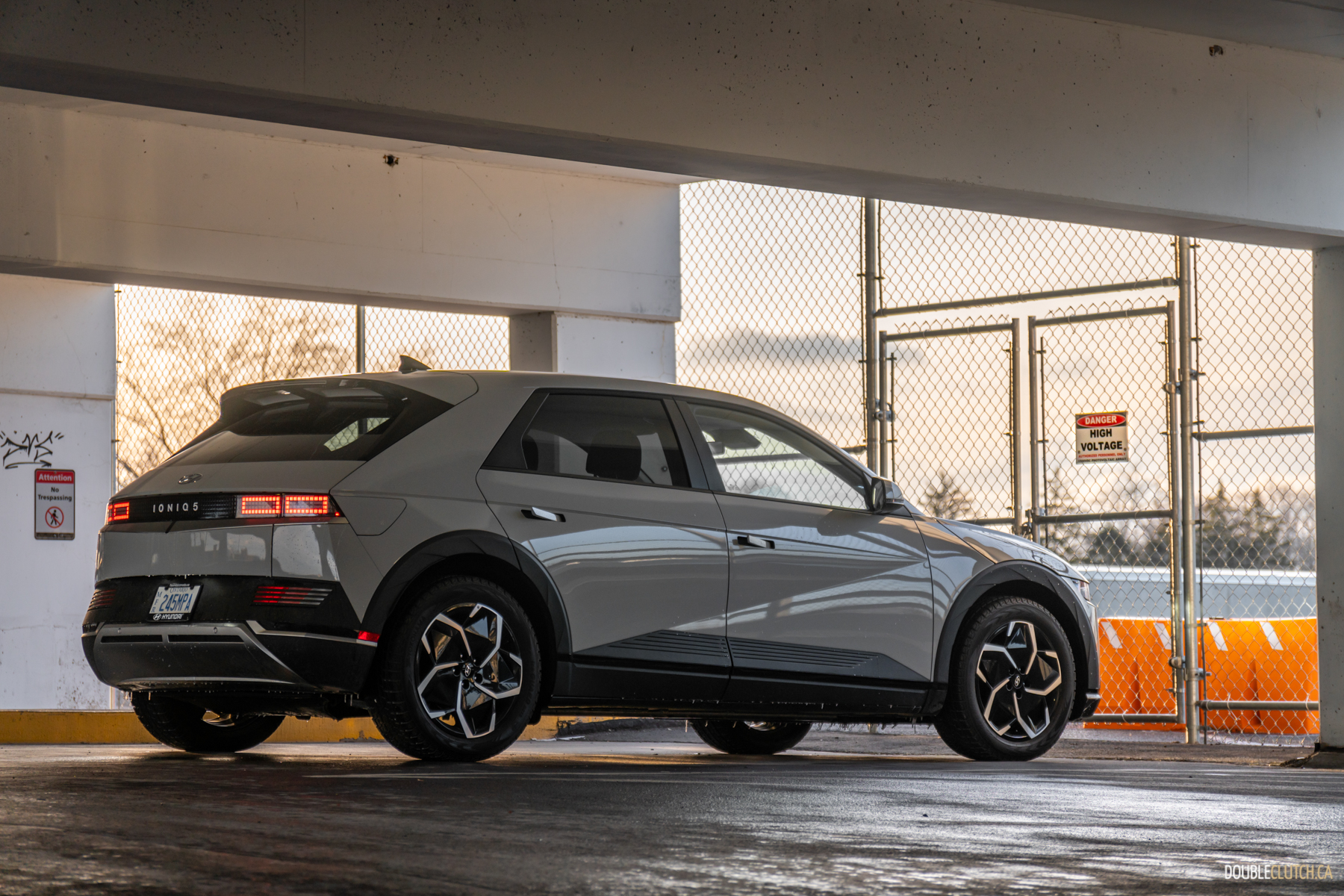
The Ioniq 5 scares me because it does work. I can’t deny that it is a damn-near perfect little mobility pod, and it exists in a well equipped and capable spec at a price point that makes sense for the majority of people looking for their next commuter. At $55,499 for the most basic yet incredibly well-equipped 2024 Hyundai Ioniq 5 RWD, it’s an unmatched value in the EV segment, and pretty excellent in general. It might be hard to differentiate EVs from each other, but Hyundai took the hard road of just being straight-up better than everyone, hitting every mark that matters to everyone except me, for the time being.
This sure went off the rails, eh?


